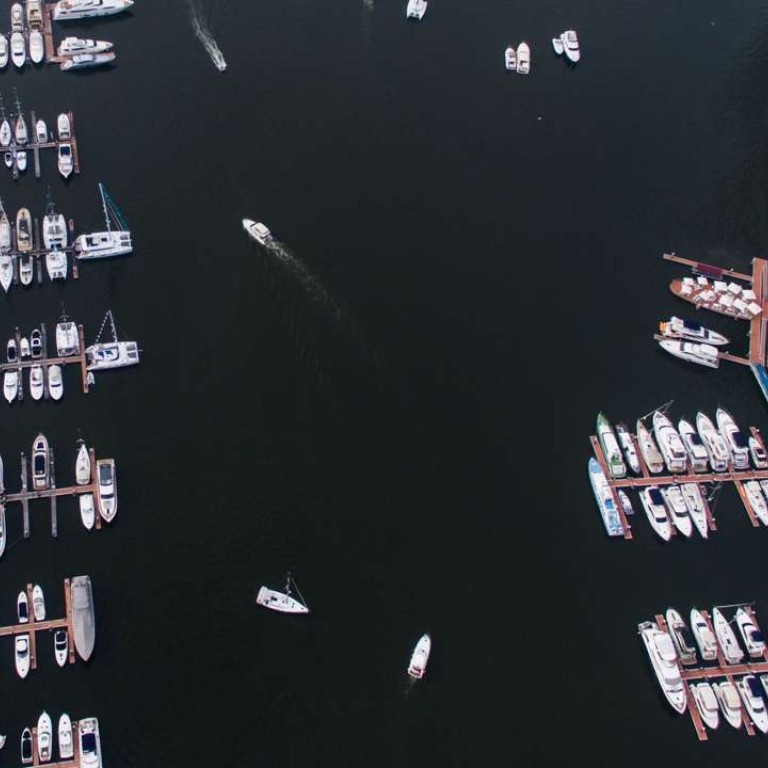
Luxury yacht sales in China stall amid concerns over economy, crackdown on corruption
Five years ago China looked like the market with the most potential for luxury yacht sales, but the boom never came after wealthy mainlanders were put off by a slowing economy, the depreciating yuan and fears over being the target of official scrutiny, according to industry insiders.
Official statistics on yacht ownership are not available for the past two years, but a report released by the China Cruise and Yacht Industry Association, affiliated with the Chinese National Development and Reform Commission, revealed that as of 2014 there were about 3,700 yachts measuring 8 metres or more registered on the mainland.
Mainland media reports indicate that the yacht market was worth about 4.15 billion yuan in 2013, the latest year figures are available.
“The market in China is still about the same size [as three yeas ago], with about 3,000 to 4,000 registered yachts across the mainland, about half imported from overseas,” said Sunny Tao, sales director with Simpson Marine Ltd, one of the mainland’s biggest yacht broker companies.
The industry began on the mainland in 1996 when two yacht clubs opened separately in Suzhou and Shenzhen. Since then, yachting has become a viable luxury activity for flamboyant, wealthy people.
“The years from 2009 to 2011 were the golden times for the yacht market in China, when the country’s economy expanded quickly following China’s 4 trillion yuan stimulus to boost the economy,” said Tao, who has sold more than 100 yachts to wealthy mainland Chinese over the past decade.
The years from 2009 to 2011 were the golden times for the yacht market in China
At the time, the booming economy and the growing number of wealthy mainlanders seemed to provide good potential for yacht sales, with projections that the mainland yacht market would reach US$10 billion by 2020.
In 2011 the yacht-related Rendez-Vous show in Sanya, Hainan, attracted more than 8,000 wealthy people – including 200 billionaires, according to mainland media reports at the time.
Thirteen luxury yachts were displayed during the four-day show, which attracted the attention of manufacturers of super-luxury yachts costing tens of millions of yuan each.
Between 2009 and 2011 Tao and his team of five sales people sold more than 80 imported yachts priced from several million yuan to dozens of million yuan. However, over the past two years Chinese luxury yacht sales have been flat and the market is increasingly susceptible to economic slowdowns and factors such as political tensions in the country, Tao said.
Unlike in the West, where yachts are considered part of a lifestyle affordable even for the middle class, on the mainland they are regarded as the preserve of the ultra-rich. Such expressions of extravagance have made yacht ownership particularly sensitive in the eyes of the public, not only due to Beijing’s crackdown on corruption, but also because China’s wealth gap is growing even wider.
“The upper-middle class would only buy yachts when the economy is seeing stable growth and people are making a good living – not like now. Many rich Chinese people are worried that they will have less wealth in future and are thinking of migrating overseas,” he said.

In the past three years Simpson Marine has generated sales of about 400 million yuan from a handful of imported super yachts – many between 50 and 100 feet – sold to mainland clients.
“I think the market in 2017 will be similar to this year unless the economic situation recovers well,” Tao said, adding that most of the clients would be working in the finance and tech industries in Beijing and Shenzhen.
But despite the challenges facing the industry Tao believes the market potential in China is still tremendous because only a limited number of mainlanders are buying yachts compared to the large number of wealthy individuals who are potential customers.
China will have more than 110,000 billionaires by 2020 and 4,200 super-rich individuals – defined as having US$1 billion or more in assets – according to the 2014 Hurun Wealth Report.
Yachting is still a young, niche market on the mainland, Tao said. “It is important to have more public docks and personnel training for marina management to promote the development of marinas in China. It would help more middle and upper class people enjoy yachting as a sport or family activity.”

